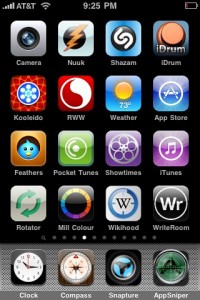The 21st century is a time of mobile app madness. While there is no use in making an argument against their popularity, there is justification for raising the question of whether or not mobile apps are an effective and profitable form of digital marketing. In this article we will breakdown the revenue and marketing value of mobile apps and placing ads in free apps as well as share some tips and examples to help make your app stand out.
Are mobile apps profitable for brands?

According to a recent Mintel report, the majority of smartphone and tablet users say they do not download paid apps, with 75% reporting they did not download any apps at all in the past month. This contrasts significantly with the 29% who said they did not download any new free apps. These numbers support the idea that the market is shifting monetization models for mobile software, which have largely turned to free-to-play and microtransaction-supported content.
Although free app downloads benefit from a considerably larger audience than those of paid apps, the share of consumers who show willingness to pay for mobile software is not negligible. Furthermore, mobile apps can increase revenue per user by implementing enticing premium features. Some 21% of mobile app users say they’ve downloaded premium features such as in-app purchases.
The majority of consumers who have used mobile apps have paid $1.99 or less for an app, with the largest share reporting that they’ve paid 99 cents or less. The share of consumers showing receptiveness for paid apps declines dramatically for apps costing $5 or more. Regardless of the monetization model used, the data make it clear that small increments are necessary for reaching a wide audience among any paid mobile apps or premium features.
Men overall reported spending more than women on mobile apps. Nearly half of men aged 35-54 and 18-34 said they’ve spent between $2 and $4.99 on mobile apps, compared to less than one third of women aged 18-34 and 42 % of women aged 35-54.
To ad or not to ad
Ads may still be a way to build general awareness regarding an app, but consumers also expressed some frustration with advertising, with 26% agreeing that they find in-app advertising to be annoying. Furthermore, receptiveness to in-app advertising does not show significant variance across consumer demographics.
Another way to curb frustration with ads is to provide some benefit for opting into them within free apps. For instance, viewing a certain number of ads may temporarily unlock an app’s premium features.
How to use apps for marketing
Gamify mobile ads
While many traditional ads can be classified as passive forms of engagement, the touch interface on mobile devices enables unique opportunities for making mobile advertising a more active experience. For example, Ford Fiesta launched a mobile ad leveraging an alternative to CAPTCHA verification that allowed users to play a short game. In the Ford Fiesta game, users were told to pack a 2014 Fiesta to go to the music festival. They then had to click and drag microphone and guitar icons to the trunk of the in- game Fiesta. According to a November 2013 Mobile Marketer article, the campaign experienced an 84% completion rate with an 8.2% click-through rate and an average ad interaction time of 8.2 seconds.
Give deals to encourage downloads
Gaining enough interest to garner initial downloads is one of the prominent barriers for brand-specific apps, since they do not carry the broad appeal of one that is used for leisure, entertainment, or a multipurpose activity. One way to encourage downloads is to offer specific deals for downloading the app. For instance, a Travelocity ad appearing within the Pandora music app in July 2014 offered a 10% discount to consumers who downloaded Travelocity’s mobile app and used the code “MOBILE10.” Tapping the ad brought users directly to a page with more information and where they could download it.
Offer value that encourages engagement
Brands can go a step further by offering value that encourages long-term engagement. For instance, a July 2014 Zappos ad emphasized the fact that consumers could get free next-business-day shipping by using the app. Instead of offering a one-time benefit for downloading the app, this actively encourages consumers to leverage the app on a regular basis. The app’s additional functionality, such as the ability to manage VIP membership perks, showcases how companies can also use mobile apps as a way to engage loyal customers.
The Takeaway
While it is clear that there is still much room for growth in the mobile technology market, the software side of the equation faces a number of hurdles. The fact that the most popular app stores are filled with apps means that it will be difficult for any individual app to stand out to consumers.
Consumers’ ambivalence toward advertising makes it even more difficult to profit from free apps. Given the apparent reluctance to view in-app advertising, mobile apps will likely benefit from giving consumers more control over how they pay for the apps they use. By providing numerous options, such as the ability to choose between short, frequent ads and longer, less frequent ads or being able to purchase an ad-free version of an app, mobile software can continue building awareness and engagement without creating widespread frustration. Furthermore, offering deals, incentives, and gamifying apps will make you stand out as app stores become flooded with options.




